 Search by Keyword
|
“I’M LOOKING THROUGH YOU”
(John Lennon – Paul McCartney)
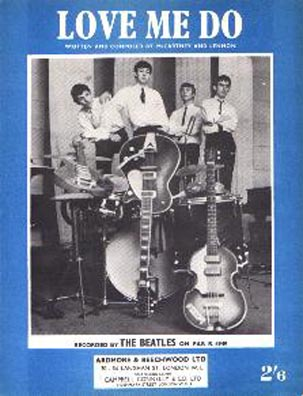 From their very first official EMI recording session on September 4th, 1962 through the following three years, The Beatles were usually able to churn out whatever song they were working on in a relatively short period of time. A standard three hour recording session could result in one, two, and sometimes three finished songs. The majority of their first album was even recorded in one day! From their very first official EMI recording session on September 4th, 1962 through the following three years, The Beatles were usually able to churn out whatever song they were working on in a relatively short period of time. A standard three hour recording session could result in one, two, and sometimes three finished songs. The majority of their first album was even recorded in one day!
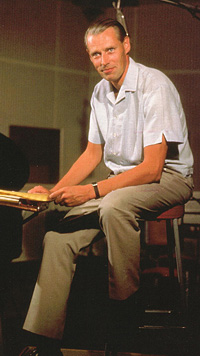 By late 1965, however, things had changed dramatically. “In the early days (George Martin) had an assistant who’d go through rehearsals with us,” remembers Ringo, "and George would just come in for the take, to press the tape button. That changed and he was there all the time, and then, as we went on, we would just be playing, and playing great, and we’d say, ‘Did you get that, George?’ I believe we taught George Martin how to keep the tape rolling. He lost that old attitude that you only press the button when you are going to do the take. We began to have the tape rolling all the time and we got a lot of good takes that way.” By late 1965, however, things had changed dramatically. “In the early days (George Martin) had an assistant who’d go through rehearsals with us,” remembers Ringo, "and George would just come in for the take, to press the tape button. That changed and he was there all the time, and then, as we went on, we would just be playing, and playing great, and we’d say, ‘Did you get that, George?’ I believe we taught George Martin how to keep the tape rolling. He lost that old attitude that you only press the button when you are going to do the take. We began to have the tape rolling all the time and we got a lot of good takes that way.”
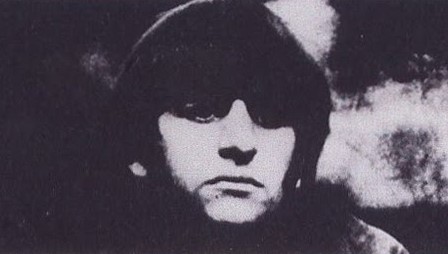 Working in this manner took more time, as evidenced in the time spent on some of the tracks on their late 1965 album “Rubber Soul.” There were also other reasons for more time being used as well, as Ringo continues: “There was a lot of experimentation on ‘Rubber Soul,’ influenced, I think, by the substances. George Martin knew about it and used to get annoyed; well not really annoyed, he would just go, ‘Oh God,’ because things would take a little longer.” Working in this manner took more time, as evidenced in the time spent on some of the tracks on their late 1965 album “Rubber Soul.” There were also other reasons for more time being used as well, as Ringo continues: “There was a lot of experimentation on ‘Rubber Soul,’ influenced, I think, by the substances. George Martin knew about it and used to get annoyed; well not really annoyed, he would just go, ‘Oh God,’ because things would take a little longer.”
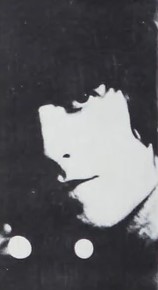 George Harrison also related reasons for more time being needed during that album. “We did spend a bit more time on it and tried new things. But the most important thing about it was that we were suddenly hearing sounds that we weren’t able to hear before…everything was blossoming at that time; including us, because we were still growing.” George Harrison also related reasons for more time being needed during that album. “We did spend a bit more time on it and tried new things. But the most important thing about it was that we were suddenly hearing sounds that we weren’t able to hear before…everything was blossoming at that time; including us, because we were still growing.”
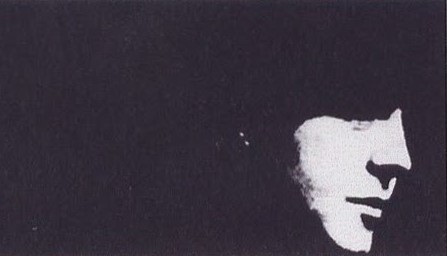 The extra time needed was especially evident during the recording of Paul McCartney’s recent composition “I’m Looking Through You.” It was common for The Beatles to continue working on a song at an additional session, and even to re-record the same song from scratch on a later day. But with this song, they worked on it on four different sessions recording three different versions before they were happy with it. This process took a total of 18 hours between four days, much longer than any other Beatles song to date. They continued the habit of camping out in the recording studio for much longer periods of time during their later career, but this was an unprecedented first for The Beatles, starting a particular song on October 24th, 1965 and not finishing it until November 11th of that year. The extra time needed was especially evident during the recording of Paul McCartney’s recent composition “I’m Looking Through You.” It was common for The Beatles to continue working on a song at an additional session, and even to re-record the same song from scratch on a later day. But with this song, they worked on it on four different sessions recording three different versions before they were happy with it. This process took a total of 18 hours between four days, much longer than any other Beatles song to date. They continued the habit of camping out in the recording studio for much longer periods of time during their later career, but this was an unprecedented first for The Beatles, starting a particular song on October 24th, 1965 and not finishing it until November 11th of that year.
Songwriting History
When asked about the song in 1980, John Lennon simply said, “Paul. He must have had an argument with Jane Asher.”
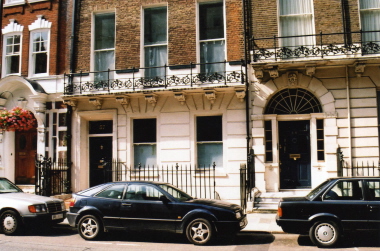 John’s recollections were correct, as McCartney explains: “As is one’s wont in relationships, you will from time to time argue or not see eye to eye on things, and a couple of the songs around this period were that kind of thing. This one I remember particularly as me being disillusioned over her commitment.” Jane Asher, with whom he had lived at her family home at 57 Wimpole Street in London since November of 1963, was intent on furthering her acting career, which meant spending a good amount of time away from home in Bristol. John’s recollections were correct, as McCartney explains: “As is one’s wont in relationships, you will from time to time argue or not see eye to eye on things, and a couple of the songs around this period were that kind of thing. This one I remember particularly as me being disillusioned over her commitment.” Jane Asher, with whom he had lived at her family home at 57 Wimpole Street in London since November of 1963, was intent on furthering her acting career, which meant spending a good amount of time away from home in Bristol.
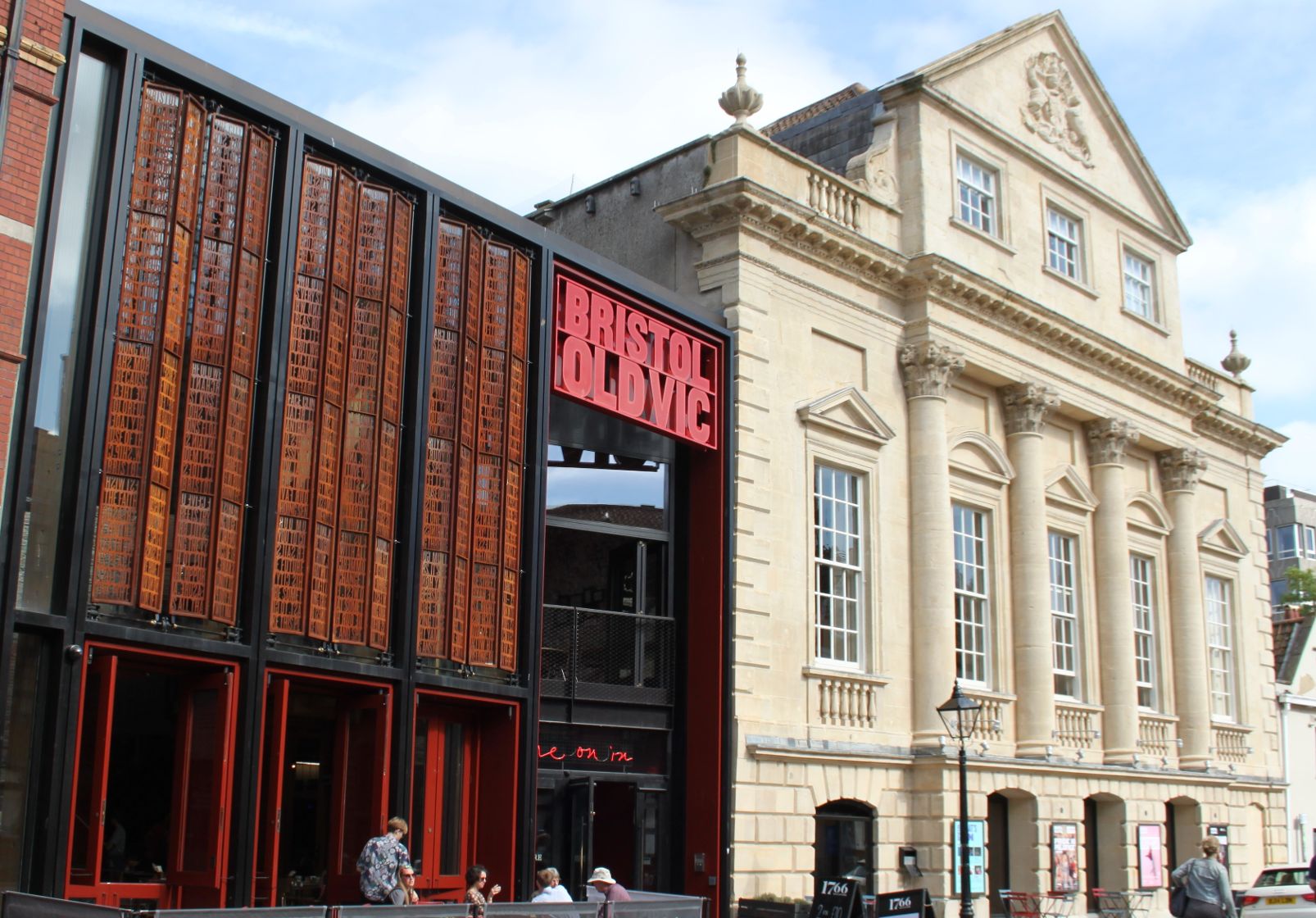 Assuming that Jane Asher’s real intent was to be away from him, Paul continues: “She went down to the Bristol Old Vic quite a lot around this time. Suffice it to say that this (song) was probably related to that romantic episode and I was seeing through her façade. And realizing that it wasn’t quite all that it seemed. I would write it out in a song and then I’ve got rid of the emotion. I don’t hold grudges so that gets rid of that little bit of emotional baggage. I remember specifically this one being about that, getting rid of some emotional baggage. ‘I’m looking through you, and you’re not there!’” Assuming that Jane Asher’s real intent was to be away from him, Paul continues: “She went down to the Bristol Old Vic quite a lot around this time. Suffice it to say that this (song) was probably related to that romantic episode and I was seeing through her façade. And realizing that it wasn’t quite all that it seemed. I would write it out in a song and then I’ve got rid of the emotion. I don’t hold grudges so that gets rid of that little bit of emotional baggage. I remember specifically this one being about that, getting rid of some emotional baggage. ‘I’m looking through you, and you’re not there!’”
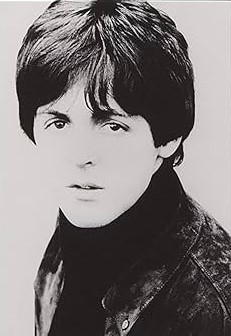 Paul confided to Beatles biographer Hunter Davies that arguments between Jane Asher and him may have led to her leaving for Bristol at that time in 1965. Knowing that he was always surrounded by woman who would die to be with him, he admitted, “I knew I was selfish. It caused a few rows. Jane went off and I said, ‘OK then. Leave. I’ll find someone else.’ It was shattering to be without her. That was when I wrote ‘I’m Looking Through You.” In his book “Many Years From Now,” Paul recalls writing the song “after an argument with Jane. There were a few of those moments.” Paul confided to Beatles biographer Hunter Davies that arguments between Jane Asher and him may have led to her leaving for Bristol at that time in 1965. Knowing that he was always surrounded by woman who would die to be with him, he admitted, “I knew I was selfish. It caused a few rows. Jane went off and I said, ‘OK then. Leave. I’ll find someone else.’ It was shattering to be without her. That was when I wrote ‘I’m Looking Through You.” In his book “Many Years From Now,” Paul recalls writing the song “after an argument with Jane. There were a few of those moments.”
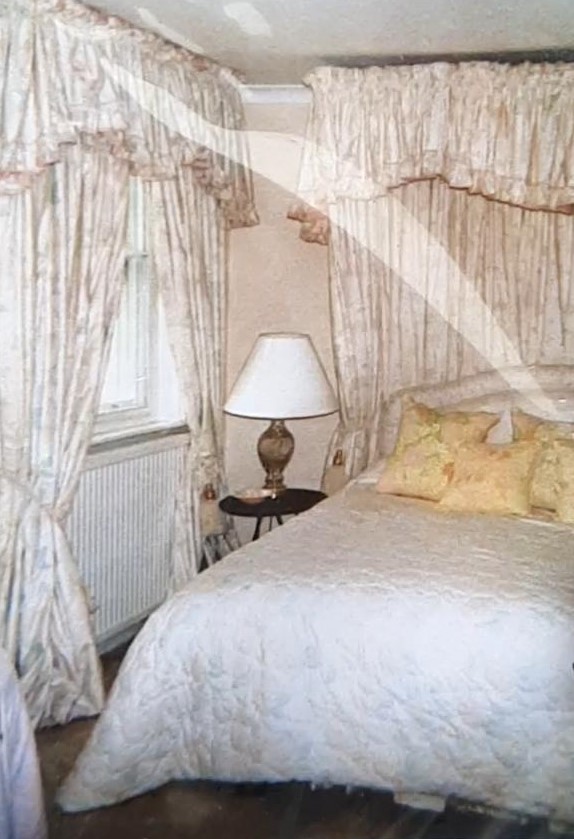 With the evidence of Jane Asher all around him, he wrote the song in his attic room at the Asher's house on Wimpole Street. The song was probably composed shortly before recording began, which would place the writing in October of 1965. As for composer credits, Paul recollects: “I think it’s totally my song. I don’t remember any of John’s assistance.” With the evidence of Jane Asher all around him, he wrote the song in his attic room at the Asher's house on Wimpole Street. The song was probably composed shortly before recording began, which would place the writing in October of 1965. As for composer credits, Paul recollects: “I think it’s totally my song. I don’t remember any of John’s assistance.”
 EMI Studios, London
|
Recording History
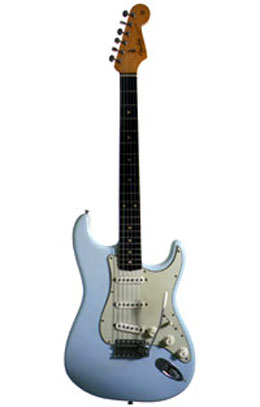 Right around the halfway mark of recording their latest album, after seven songs being all or nearly completed, they devoted October 24th, 1965 to recording McCartney’s latest composition “I’m Looking Through You.” They entered EMI Studio Two at 2:30 pm for two back-to-back sessions that amounted to nine hours. The first four-and-a-half hours were spent creating the rhythm track, which obviously included much rehearsal since only one complete take was set to tape during this period of time. The instrumentation of the rhythm track included Paul on bass and vocals, John on acoustic guitar, George on electric guitar and Ringo on drums. Right around the halfway mark of recording their latest album, after seven songs being all or nearly completed, they devoted October 24th, 1965 to recording McCartney’s latest composition “I’m Looking Through You.” They entered EMI Studio Two at 2:30 pm for two back-to-back sessions that amounted to nine hours. The first four-and-a-half hours were spent creating the rhythm track, which obviously included much rehearsal since only one complete take was set to tape during this period of time. The instrumentation of the rhythm track included Paul on bass and vocals, John on acoustic guitar, George on electric guitar and Ringo on drums.
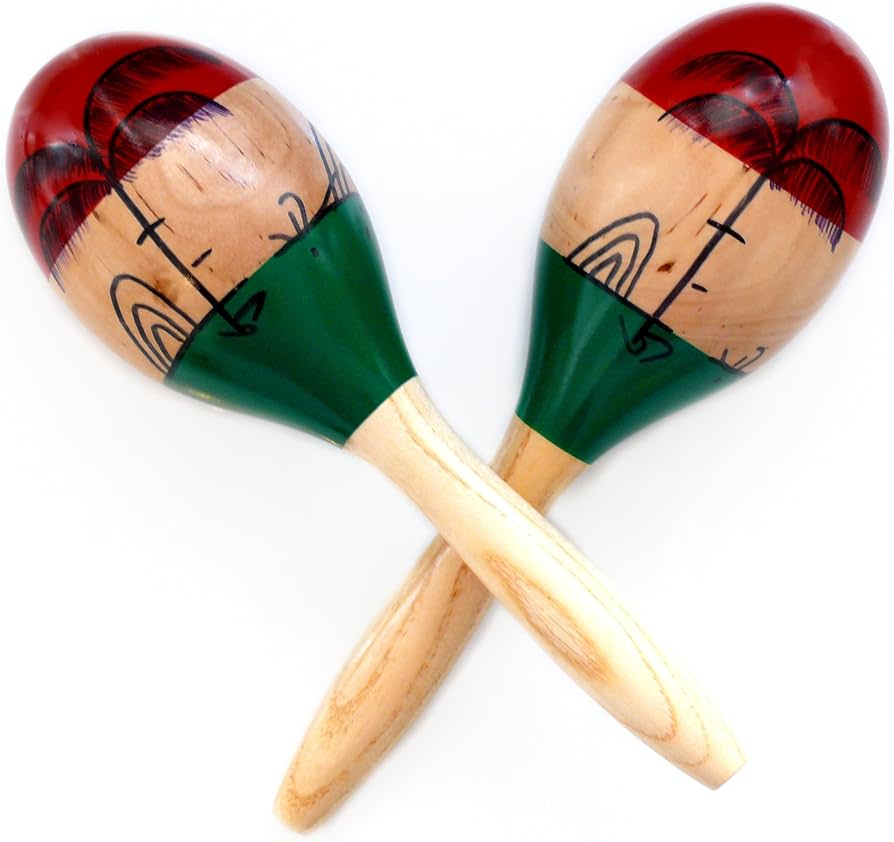 At 7 pm they began the overdubs, which included maracas, bongos, Hammond organ, double-tracked lead vocals from Paul, harmony vocals from John and handclaps. The handclaps were done in quick-paced eighth notes in the introduction, half notes during most of each verse, and quarter notes during the last four measures of each verse as well as during the instrumental sections of the song. By 11:30 pm, the song appeared to be complete. At 7 pm they began the overdubs, which included maracas, bongos, Hammond organ, double-tracked lead vocals from Paul, harmony vocals from John and handclaps. The handclaps were done in quick-paced eighth notes in the introduction, half notes during most of each verse, and quarter notes during the last four measures of each verse as well as during the instrumental sections of the song. By 11:30 pm, the song appeared to be complete.
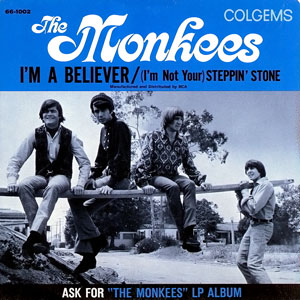 A unique feature of this recording is the back-and-forth interplay between acoustic and electric arrangements. The song starts out with a mellow acoustic feel only to surprise you in the final four measures by jumping into a raucous harder sound. This is repeated throughout the song with the solo sections pre-dating The Monkees stabbing organ sounds and "swinging" electric guitar solos. A unique feature of this recording is the back-and-forth interplay between acoustic and electric arrangements. The song starts out with a mellow acoustic feel only to surprise you in the final four measures by jumping into a raucous harder sound. This is repeated throughout the song with the solo sections pre-dating The Monkees stabbing organ sounds and "swinging" electric guitar solos.
 An excellent mono mix of the song was made shortly afterward, presumably on October 25th, 1965, in the EMI Studio Two control room by George Martin and engineers Norman Smith and Ken Scott. Although documentation does not verify this mix being made on this day, it seems likely since the other six completed songs were given their official mono mixes on this day. An excellent mono mix of the song was made shortly afterward, presumably on October 25th, 1965, in the EMI Studio Two control room by George Martin and engineers Norman Smith and Ken Scott. Although documentation does not verify this mix being made on this day, it seems likely since the other six completed songs were given their official mono mixes on this day.
 However, someone (probably its composer) was not happy with how the recording came out. Therefore, on November 6th, 1965, a decision was made to devote the day to recording a remake of the song. They entered EMI Studio Two at 7 pm for a six hour recording session that resulted in a more acoustic rendition of “I’m Looking Through You.” To round out the composition, McCartney wrote a bridge and included it in the arrangement. Mark Lewisohn, in his book “The Beatles Recording Sessions,” describes this version as “perhaps a little too fast and frenetic” which may have been the reason why neither of the two takes recorded on this day have ever seen the light of day anywhere, even on bootlegs. However, someone (probably its composer) was not happy with how the recording came out. Therefore, on November 6th, 1965, a decision was made to devote the day to recording a remake of the song. They entered EMI Studio Two at 7 pm for a six hour recording session that resulted in a more acoustic rendition of “I’m Looking Through You.” To round out the composition, McCartney wrote a bridge and included it in the arrangement. Mark Lewisohn, in his book “The Beatles Recording Sessions,” describes this version as “perhaps a little too fast and frenetic” which may have been the reason why neither of the two takes recorded on this day have ever seen the light of day anywhere, even on bootlegs.
 Not wanting to waste a good song, and because the deadline for the album was fast approaching and they needed all the material they could find, they took another stab at the song on November 10th of that year. They entered EMI Studio Two at 9 pm on that day for what turned out to be a late night session that lasted seven hours. The first thing on the agenda was to fully record the new Lennon / McCartney composition “The Word.” After approximately five hours being used to complete this song, they worked from 2 till 4 am on perfecting the rhythm track for their third version of “I’m Looking Through You.” Not wanting to waste a good song, and because the deadline for the album was fast approaching and they needed all the material they could find, they took another stab at the song on November 10th of that year. They entered EMI Studio Two at 9 pm on that day for what turned out to be a late night session that lasted seven hours. The first thing on the agenda was to fully record the new Lennon / McCartney composition “The Word.” After approximately five hours being used to complete this song, they worked from 2 till 4 am on perfecting the rhythm track for their third version of “I’m Looking Through You.”
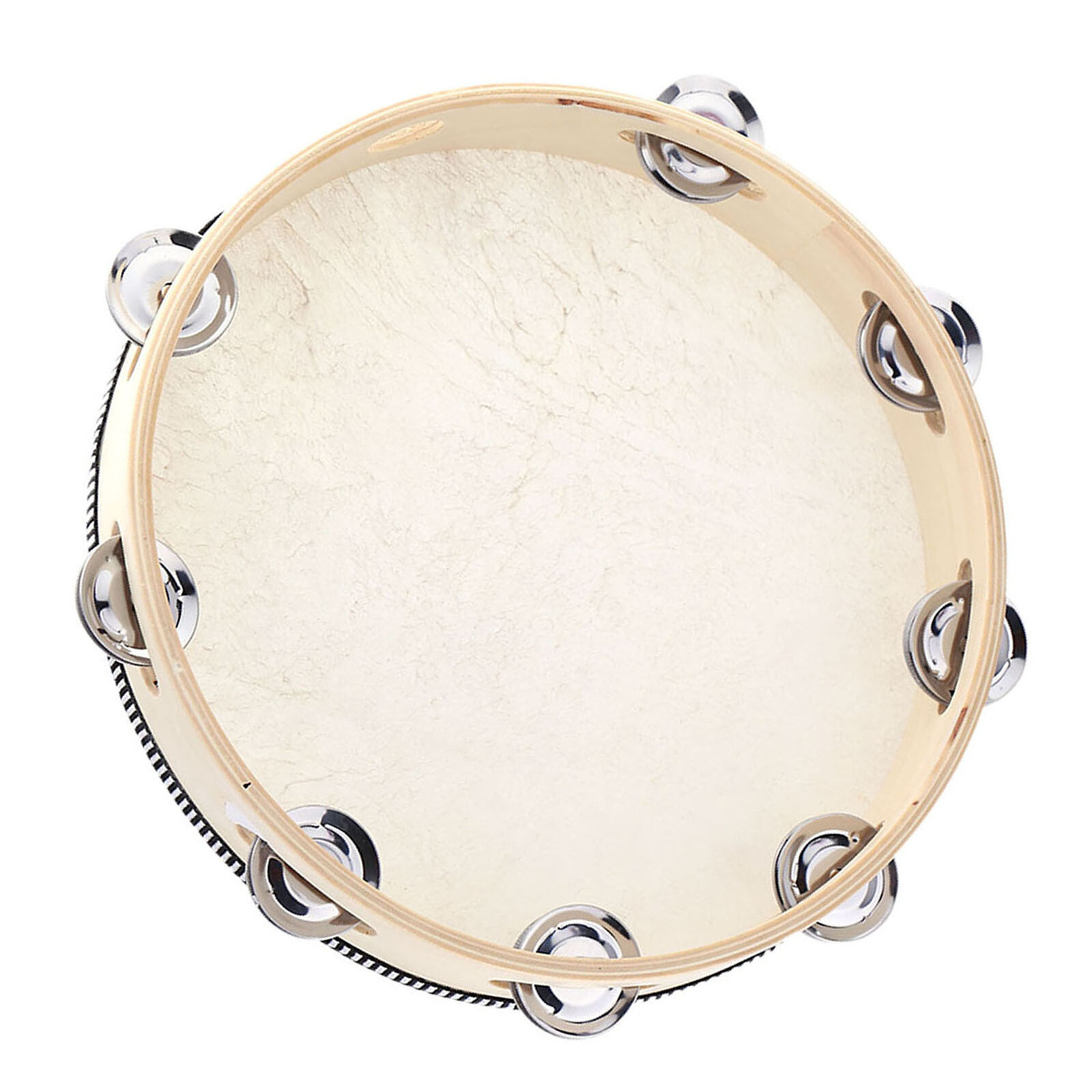 Since they were definitely familiar with the song by now, only one take ("take four") was needed to nail down the rhythm track. The instrumentation appears to be John on acoustic guitar, Paul on bass and Ringo on drums. Upon close examination of the first stereo mix of the song, which contains the rhythm track entirely on the left channel, we hear a tambourine being played simultaneously by someone. This wasn’t overdubbed later, since a tambourine flub occurs during the third verse which couldn’t be mixed out since it was on the same track as other rhythm instruments. It couldn’t be Ringo since he was playing drums, nor could it be Paul since he was playing bass. Since the acoustic guitar introduction includes two false starts, we can deduce that this is probably John since he did the same thing on the master tape of his acoustic introduction to “Norwegian Wood.” Therefore, the tambourine appears to have been played by George Harrison. Since they were definitely familiar with the song by now, only one take ("take four") was needed to nail down the rhythm track. The instrumentation appears to be John on acoustic guitar, Paul on bass and Ringo on drums. Upon close examination of the first stereo mix of the song, which contains the rhythm track entirely on the left channel, we hear a tambourine being played simultaneously by someone. This wasn’t overdubbed later, since a tambourine flub occurs during the third verse which couldn’t be mixed out since it was on the same track as other rhythm instruments. It couldn’t be Ringo since he was playing drums, nor could it be Paul since he was playing bass. Since the acoustic guitar introduction includes two false starts, we can deduce that this is probably John since he did the same thing on the master tape of his acoustic introduction to “Norwegian Wood.” Therefore, the tambourine appears to have been played by George Harrison.
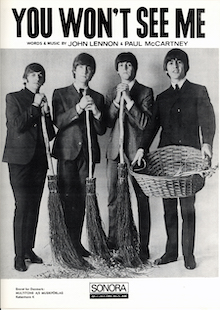 The next day, November 11th, 1965, was the deadline to complete the "Rubber Soul" album. Therefore, they entered EMI Studio Two at 6 pm for an unprecedented thirteen-hour recording session, which took them to 7 am the following morning. After spending the first ten hours fully recording two new compositions, namely “You Won’t See Me” and “Girl,” they resurrected “Wait,” which was a leftover track from the “Help!” sessions, adding overdubs to it for about an hour. The next day, November 11th, 1965, was the deadline to complete the "Rubber Soul" album. Therefore, they entered EMI Studio Two at 6 pm for an unprecedented thirteen-hour recording session, which took them to 7 am the following morning. After spending the first ten hours fully recording two new compositions, namely “You Won’t See Me” and “Girl,” they resurrected “Wait,” which was a leftover track from the “Help!” sessions, adding overdubs to it for about an hour.
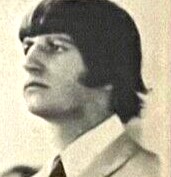 Following this, from around 5 to 7 am on the morning of November 12th, 1965, they added the final overdubs to “I’m Looking Through You.” These comprised Paul’s lead vocals, John’s harmony vocals, George on lead guitar, Paul playing a lead guitar riff at the end of each verse, Ringo stabbing a chord on a Hammond organ in the final measures of each verse, and Paul double-tracking his lead vocals. Following this, from around 5 to 7 am on the morning of November 12th, 1965, they added the final overdubs to “I’m Looking Through You.” These comprised Paul’s lead vocals, John’s harmony vocals, George on lead guitar, Paul playing a lead guitar riff at the end of each verse, Ringo stabbing a chord on a Hammond organ in the final measures of each verse, and Paul double-tracking his lead vocals.
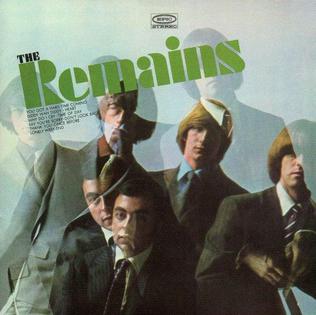 One other mysterious overdub was performed by Ringo during these early morning hours. Barry Tashian, lead guitarist and vocalist of the group The Remains, who was one of the opening acts of The Beatles’ 1966 tour, recalls a conversation he had with Ringo on their tour plane. “We usually talked more about music and records (than instruments). But I did ask Ringo about ‘I’m Looking Through You’ and that tapping percussion sound on it. He told me that I was privy to a great secret, that he just tapped on a pack of matches with his finger.” One other mysterious overdub was performed by Ringo during these early morning hours. Barry Tashian, lead guitarist and vocalist of the group The Remains, who was one of the opening acts of The Beatles’ 1966 tour, recalls a conversation he had with Ringo on their tour plane. “We usually talked more about music and records (than instruments). But I did ask Ringo about ‘I’m Looking Through You’ and that tapping percussion sound on it. He told me that I was privy to a great secret, that he just tapped on a pack of matches with his finger.”
 Both the mono and original stereo mixes of the song were made on November 15th, 1965, in the control room of EMI Studio One by George Martin and engineers Norman Smith and Richard Lush. The stereo mix, which fades out slightly earlier than the mono mix, was made by placing the rhythm track entirely on the left channel and all of the overdubs, vocals included, entirely on the right channel. The two false starts of the acoustic guitar were left on the stereo mix when it was sent out to different countries, the engineering staff figuring they would know to edit it off when preparing their masters for release. Both the mono and original stereo mixes of the song were made on November 15th, 1965, in the control room of EMI Studio One by George Martin and engineers Norman Smith and Richard Lush. The stereo mix, which fades out slightly earlier than the mono mix, was made by placing the rhythm track entirely on the left channel and all of the overdubs, vocals included, entirely on the right channel. The two false starts of the acoustic guitar were left on the stereo mix when it was sent out to different countries, the engineering staff figuring they would know to edit it off when preparing their masters for release.
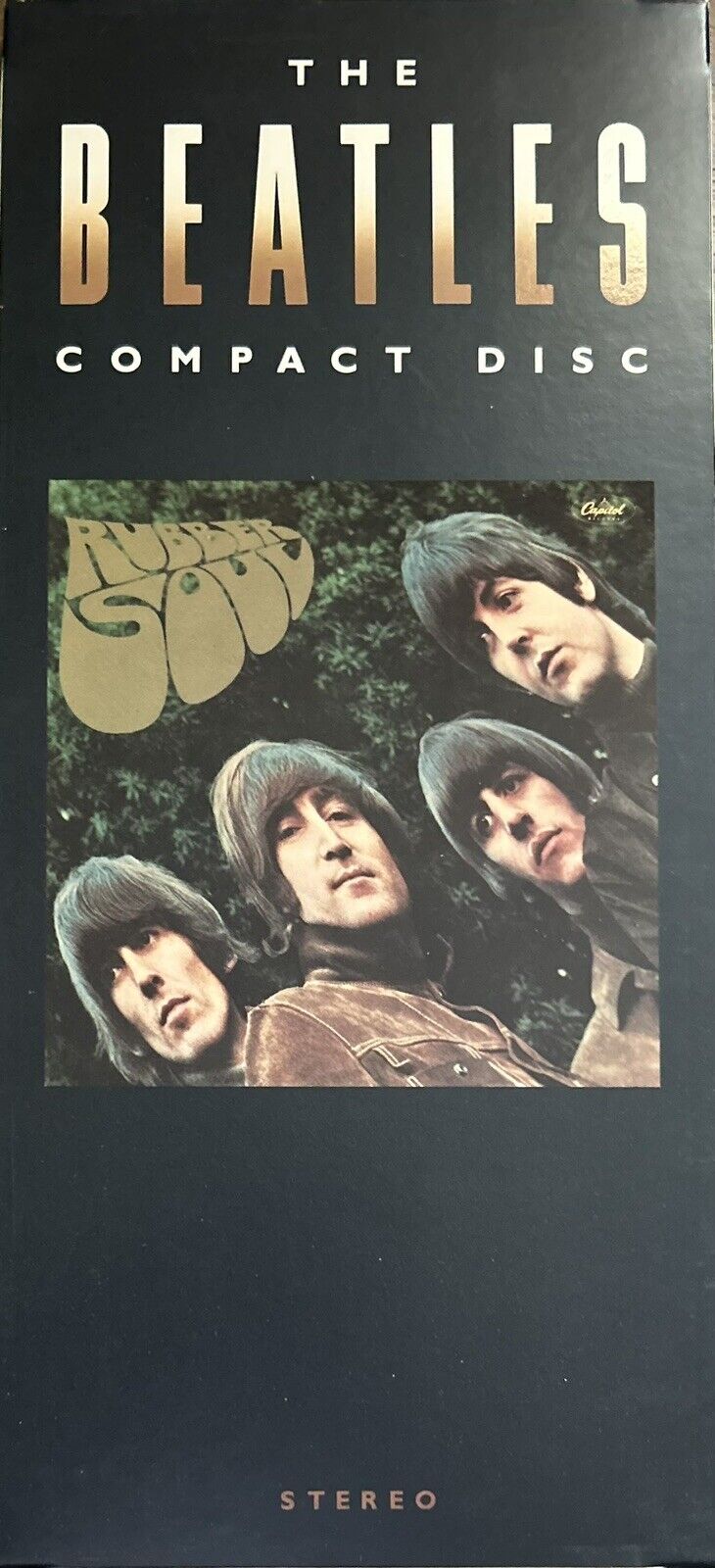 George Martin returned to the master tapes in 1986 to create new stereo mixes for the entire “Rubber Soul” album. These new mixes were used on the 1987 compact disc release of “Rubber Soul.” The only noticeable difference from the original stereo mix of “I’m Looking Through You” is that both the left and right channels are panned slightly to the center, allowing the vocals to come through slightly on the left channel. George Martin returned to the master tapes in 1986 to create new stereo mixes for the entire “Rubber Soul” album. These new mixes were used on the 1987 compact disc release of “Rubber Soul.” The only noticeable difference from the original stereo mix of “I’m Looking Through You” is that both the left and right channels are panned slightly to the center, allowing the vocals to come through slightly on the left channel.
Also, for some strange reason, one of Ringo’s organ stabs at the end of the third verse is centered in this new mix. It sounds as though he missed one of the chords when the original overdub was performed and added it onto a different track later. On the original stereo mix, they had that track panned all the way to the right so the repair work wasn’t noticed, but when George Martin created this new stereo mix, that track was apparently in the center of the mix when that portion of the song came up. That’s the only thing I can think of.
Song Structure and Style
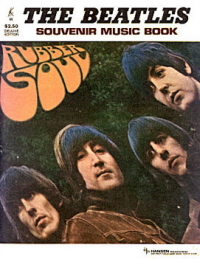 The standard use of verses and bridges is returned to here once again, culminating in a ‘verse/ verse/ bridge/ verse/ bridge/ verse’ format (or aababa). A simple introduction is included while an extended final verse acts as a fitting conclusion. No solo section was required for this track. The standard use of verses and bridges is returned to here once again, culminating in a ‘verse/ verse/ bridge/ verse/ bridge/ verse’ format (or aababa). A simple introduction is included while an extended final verse acts as a fitting conclusion. No solo section was required for this track.
One matter that is tricky, however, is determining where the downbeat of each verse lands. The casual listener may not concern himself with this detail, but deeper thinkers and musicians may wonder. While the downbeat could either be just before the lyrics start or mid sentence (“I’m looking / through you”), for argument's sake, we’ll assume that Paul wanted it to be the first option.
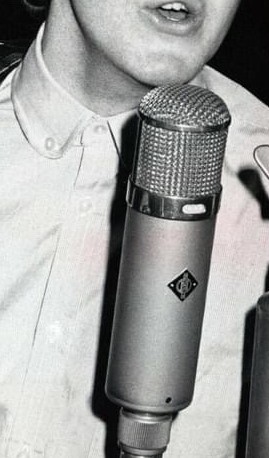 Therefore, the acoustic guitar introduction would be five measures long, ending just before the vocals begin. If you listen closely enough during this introduction, you can hear Paul practice his vocals in the right channel repeating “where did you go?” on the vinyl record, although the CD mix wiped this away. Therefore, the acoustic guitar introduction would be five measures long, ending just before the vocals begin. If you listen closely enough during this introduction, you can hear Paul practice his vocals in the right channel repeating “where did you go?” on the vinyl record, although the CD mix wiped this away.
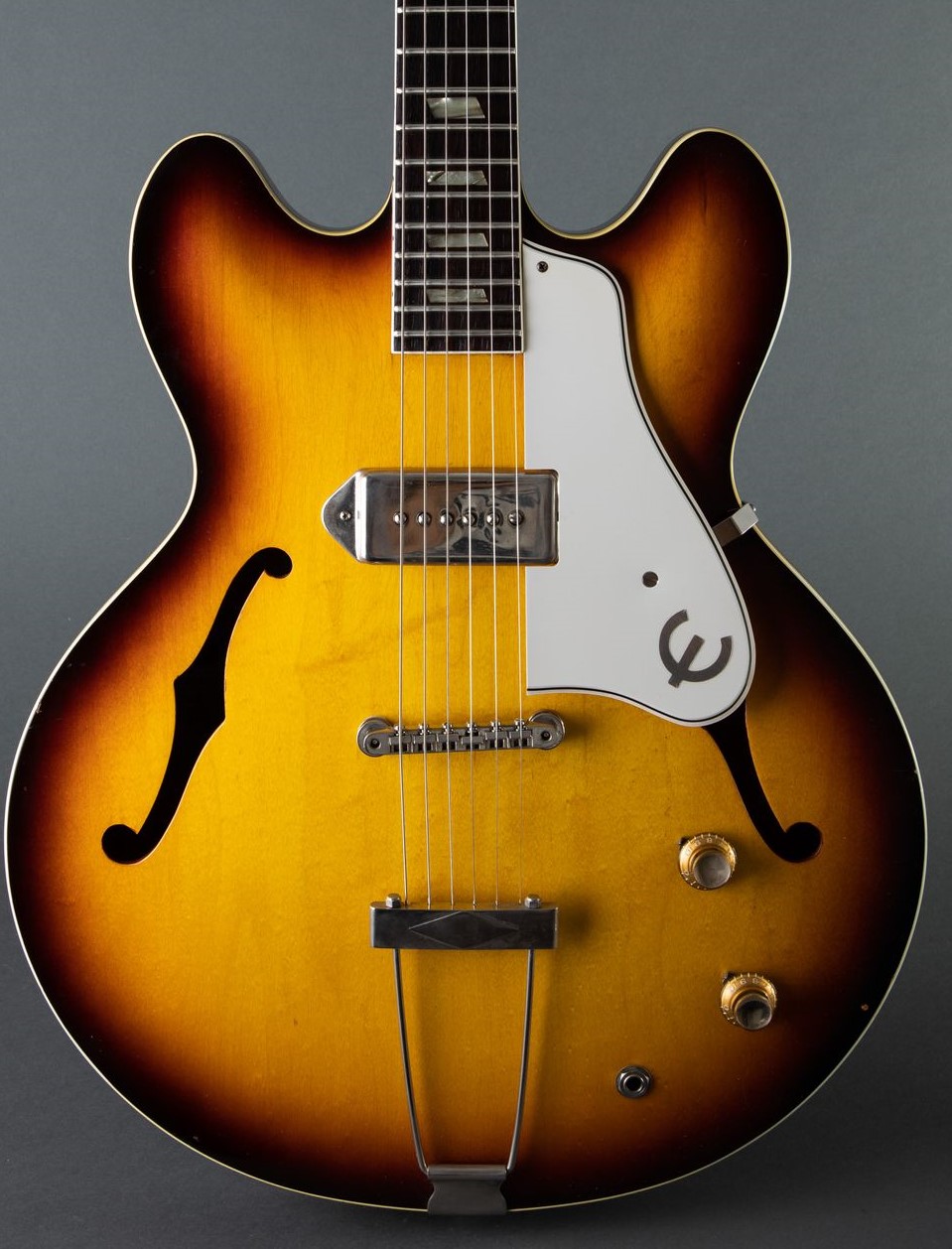 The eighteen-measure first verse then commences with the bass, drums and matches-tapping coming in on the second measure to accompany the acoustic guitar and Paul’s double-tracked lead vocals. Measures nine through twelve show John joining Paul with lower harmony vocals, no doubt pre-arranged by George Martin during their first recording attempt at the song on October 24th, 1965. Measure fifteen has Paul climaxing the verse at a high register on the words “you’re not the same” which triggers a jump from a folk-rock arrangement to a high energy feel with Paul’s winding guitar lead accented by Ringo’s organ stabs and George’s tambourine for the final three measures. The eighteen-measure first verse then commences with the bass, drums and matches-tapping coming in on the second measure to accompany the acoustic guitar and Paul’s double-tracked lead vocals. Measures nine through twelve show John joining Paul with lower harmony vocals, no doubt pre-arranged by George Martin during their first recording attempt at the song on October 24th, 1965. Measure fifteen has Paul climaxing the verse at a high register on the words “you’re not the same” which triggers a jump from a folk-rock arrangement to a high energy feel with Paul’s winding guitar lead accented by Ringo’s organ stabs and George’s tambourine for the final three measures.
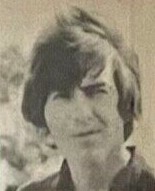 The first measure of the second verse is marked by the last organ stab by Ringo as the downbeat, which is followed immediately by the lyrics of the second verse, namely “your lips are moving.” This verse actually becomes nineteen measures long because of one extra measure of high energy vamping at the end. Otherwise, the framework of the verse is identical to the first except for the appearance of George on electric guitar for the first time in the twelfth and thirteenth measures. The first measure of the second verse is marked by the last organ stab by Ringo as the downbeat, which is followed immediately by the lyrics of the second verse, namely “your lips are moving.” This verse actually becomes nineteen measures long because of one extra measure of high energy vamping at the end. Otherwise, the framework of the verse is identical to the first except for the appearance of George on electric guitar for the first time in the twelfth and thirteenth measures.
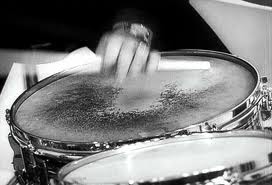 Also noteworthy in this verse is Ringo missing the snare at the end of the eighteenth measure. In fact, throughout the song Ringo is attempting to perform a rim-shot, which is hitting the snare drum and snare rim in the same stroke as witnessed in the film footage of “You’re Going To Lose That Girl” in the movie “Help!” The recording of “I’m Looking Through You” shows that he hasn’t quite mastered this trick yet. The sound of the snare drum in this song changes from beat to beat quite a lot as well as occasionally hitting only the rim as we hear in the second verse. Also noteworthy in this verse is Ringo missing the snare at the end of the eighteenth measure. In fact, throughout the song Ringo is attempting to perform a rim-shot, which is hitting the snare drum and snare rim in the same stroke as witnessed in the film footage of “You’re Going To Lose That Girl” in the movie “Help!” The recording of “I’m Looking Through You” shows that he hasn’t quite mastered this trick yet. The sound of the snare drum in this song changes from beat to beat quite a lot as well as occasionally hitting only the rim as we hear in the second verse.
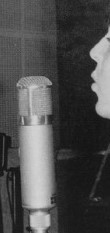 An eight-measure bridge is next, which maintains the double-tracked lead vocals as well as the tambourine as heard in the final measures of the previous verse. The match-slapping is still heard but in a rather haphazard manner that is quite out of beat at times, such as in the fourth measure. A noticeable edit is heard in the fifth measure during the lyric “love has a nasty habit.” George’s lead guitar ramblings are also heard in the bridge on the fourth, seventh and eighth measures. An eight-measure bridge is next, which maintains the double-tracked lead vocals as well as the tambourine as heard in the final measures of the previous verse. The match-slapping is still heard but in a rather haphazard manner that is quite out of beat at times, such as in the fourth measure. A noticeable edit is heard in the fifth measure during the lyric “love has a nasty habit.” George’s lead guitar ramblings are also heard in the bridge on the fourth, seventh and eighth measures.
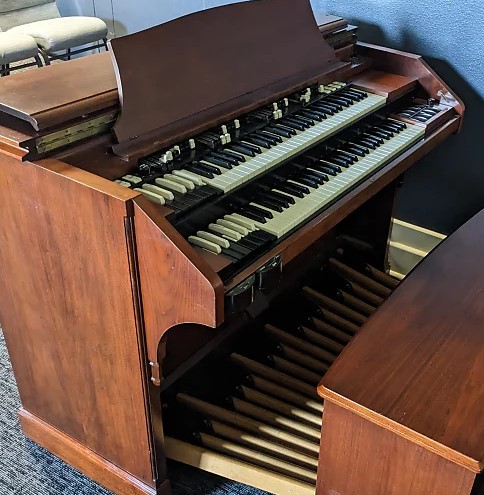 Following this is another nineteen-measure verse, which is essentially identical to the second verse except for a new set of lyrics. George also adds a couple of interjectory fills in measures four and eight this time around. This appears to be a problematic verse in a few ways, the first example being feedback from the acoustic guitar microphone in the sixth measure in-between the lyrics “you were above me (squeak) but not today.” This is followed in the eighth measure by what sounds like George dropping his tambourine while waiting to come in on the sixteenth measure. The eighteenth measure is where Ringo apparently forgot to hit his organ stab twice, resulting in a slightly off beat overdub on another track to fix the problem. And Ringo also misses the snare drum again in the fourteenth measure after the words “you’re down there.” Following this is another nineteen-measure verse, which is essentially identical to the second verse except for a new set of lyrics. George also adds a couple of interjectory fills in measures four and eight this time around. This appears to be a problematic verse in a few ways, the first example being feedback from the acoustic guitar microphone in the sixth measure in-between the lyrics “you were above me (squeak) but not today.” This is followed in the eighth measure by what sounds like George dropping his tambourine while waiting to come in on the sixteenth measure. The eighteenth measure is where Ringo apparently forgot to hit his organ stab twice, resulting in a slightly off beat overdub on another track to fix the problem. And Ringo also misses the snare drum again in the fourteenth measure after the words “you’re down there.”
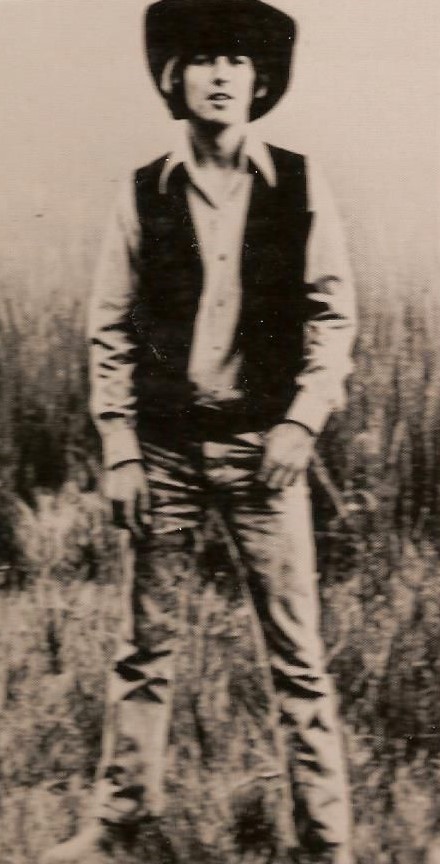 A repeat of the eight-measure bridge comes next which pretty much comes off without much of a problem. Ringo opts not to match-tap this time around while George keeps his guitar ramblings to a minimum. A repeat of the first verse then occurs which extends the measure count indefinitely as a fade-out conclusion to the song. Ringo continues to miss-hit his snare many times, which is especially noticeable in the eighth measure. George is heard doodling around a little on guitar in the third and fourth measure, but he appears to be out of ad-lib ideas and just sits out the rest of the song after that, except for his tambourine playing in the fade-out of course. During the twelve measures of high-energy vamping in the conclusion, Paul plays up his vocal high jinks with single-tracked ad-libs like “yeah, a-baby, you’ve changed” and “a-you changed, you changed…” as he fades off into the sunset. A repeat of the eight-measure bridge comes next which pretty much comes off without much of a problem. Ringo opts not to match-tap this time around while George keeps his guitar ramblings to a minimum. A repeat of the first verse then occurs which extends the measure count indefinitely as a fade-out conclusion to the song. Ringo continues to miss-hit his snare many times, which is especially noticeable in the eighth measure. George is heard doodling around a little on guitar in the third and fourth measure, but he appears to be out of ad-lib ideas and just sits out the rest of the song after that, except for his tambourine playing in the fade-out of course. During the twelve measures of high-energy vamping in the conclusion, Paul plays up his vocal high jinks with single-tracked ad-libs like “yeah, a-baby, you’ve changed” and “a-you changed, you changed…” as he fades off into the sunset.
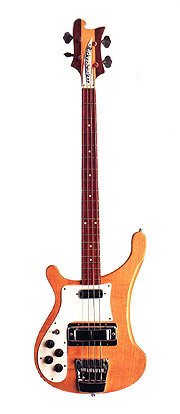 This being essentially a ‘Paul song’ however you slice it, McCartney takes center stage with his double-tracked lead vocals and vibrant guitar leads in the final measures of each verse. His bass work is also engaging, his downward run that accompanies his upward rise in vocals (such as when “I’m looking through you” or “I thought I knew you” is heard) being especially notable. John does well in playing the folk-guitarist role with touches of well-performed vocal harmonies in each mid-verse. Ringo’s drums in the rhythm track are no more than a simple hi-hat/snare beat without any fills or cymbal crashes. However, they kept him quite busy with organ stabs and match-tapping as overdubs, which show him as a real trooper. This being essentially a ‘Paul song’ however you slice it, McCartney takes center stage with his double-tracked lead vocals and vibrant guitar leads in the final measures of each verse. His bass work is also engaging, his downward run that accompanies his upward rise in vocals (such as when “I’m looking through you” or “I thought I knew you” is heard) being especially notable. John does well in playing the folk-guitarist role with touches of well-performed vocal harmonies in each mid-verse. Ringo’s drums in the rhythm track are no more than a simple hi-hat/snare beat without any fills or cymbal crashes. However, they kept him quite busy with organ stabs and match-tapping as overdubs, which show him as a real trooper.
 George is the most low-keyed Beatle in the song, shaking a tambourine at times and doodling around on electric guitar whenever the mood struck him. Some commentators suggest he’s not on the track at all, but his usual penchant for filling in the gaps between vocal lines with guitar fills shows he definitely had a hand in the recording of this song. George is the most low-keyed Beatle in the song, shaking a tambourine at times and doodling around on electric guitar whenever the mood struck him. Some commentators suggest he’s not on the track at all, but his usual penchant for filling in the gaps between vocal lines with guitar fills shows he definitely had a hand in the recording of this song.
McCartney’s lyrics, while depicting his disillusionment concerning the absence of his current girlfriend, appear to be written more artistically than autobiographically revealing. He can see “through” her being away, Jane Asher saying that she wants to pursue her acting career while he is convinced she just wants to be away from him. As if he’s speaking literally, he adds “where did you go” as if she was literally transparent. Although she physically doesn’t “look different,” he emphatically screams “you’re not the same!” Even her “soothing” voice on the phone doesn’t dispel what he suspects is true, saying her “words aren’t clear.” After all, he’s “leaned the game.”
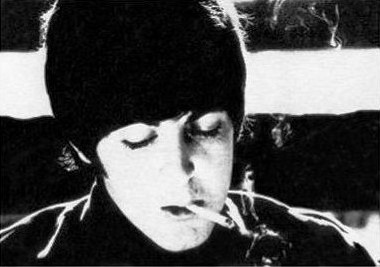 The third verse also contains some curious lines about her formerly being “above” him “but not today.” In Paul’s mind she is now “down there,” which probably depicts how he used so think so highly of her but now she’s seen as someone who’s as shallow as most of the women Paul encounters. The third verse also contains some curious lines about her formerly being “above” him “but not today.” In Paul’s mind she is now “down there,” which probably depicts how he used so think so highly of her but now she’s seen as someone who’s as shallow as most of the women Paul encounters.
 Only the bridge, which was written as an afterthought, tells the story without the veil of poetic license. “Why do you not treat me right?,” he clearly asks. The next line reveals his suspicions about the future of his relationship, namely “love has a nasty habit of disappearing overnight.” Some writers view this line as a threat that Paul will move on if things don’t change, but the saddened melody line and chord changes seem to depict his vulnerability rather than any jab of vengeance. Only the bridge, which was written as an afterthought, tells the story without the veil of poetic license. “Why do you not treat me right?,” he clearly asks. The next line reveals his suspicions about the future of his relationship, namely “love has a nasty habit of disappearing overnight.” Some writers view this line as a threat that Paul will move on if things don’t change, but the saddened melody line and chord changes seem to depict his vulnerability rather than any jab of vengeance.
American Releases
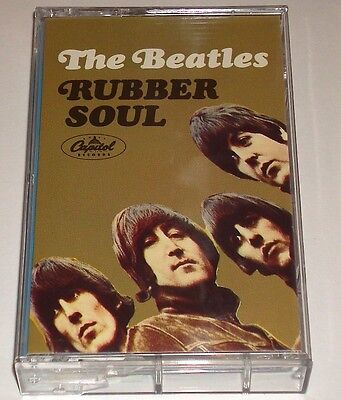 December 6th, 1965, was the date that the US first heard “I’m Looking Through You” as an album track on the Capitol release “Rubber Soul.” Since the stereo mix sent from EMI still contained the two false starts from John’s acoustic guitar introduction, Capitol didn’t realize they were supposed to edit it out. Therefore, American audiences got accustomed to hearing the song with a few extra introductory seconds that Britain never got to hear. The mono copies of the album, however, did not contain the false starts so we can assume that the mono mix sent from EMI already had them removed. Capitol's version of "Rubber Soul" was released on an individual compact disc on January 21st, 2014, both the mono and stereo versions of the album contained on a single CD. December 6th, 1965, was the date that the US first heard “I’m Looking Through You” as an album track on the Capitol release “Rubber Soul.” Since the stereo mix sent from EMI still contained the two false starts from John’s acoustic guitar introduction, Capitol didn’t realize they were supposed to edit it out. Therefore, American audiences got accustomed to hearing the song with a few extra introductory seconds that Britain never got to hear. The mono copies of the album, however, did not contain the false starts so we can assume that the mono mix sent from EMI already had them removed. Capitol's version of "Rubber Soul" was released on an individual compact disc on January 21st, 2014, both the mono and stereo versions of the album contained on a single CD.
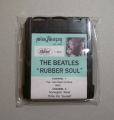 Sometime in 1967, Capitol released Beatles music on a brand new but short-lived format called "Playtapes." These tape cartridges did not have the capability to include entire albums, so two truncated four-song versions of "Rubber Soul" were released in this portable format, "I'm Looking Through You" being on one of them. These "Playtapes" are highly collectable today. Sometime in 1967, Capitol released Beatles music on a brand new but short-lived format called "Playtapes." These tape cartridges did not have the capability to include entire albums, so two truncated four-song versions of "Rubber Soul" were released in this portable format, "I'm Looking Through You" being on one of them. These "Playtapes" are highly collectable today.
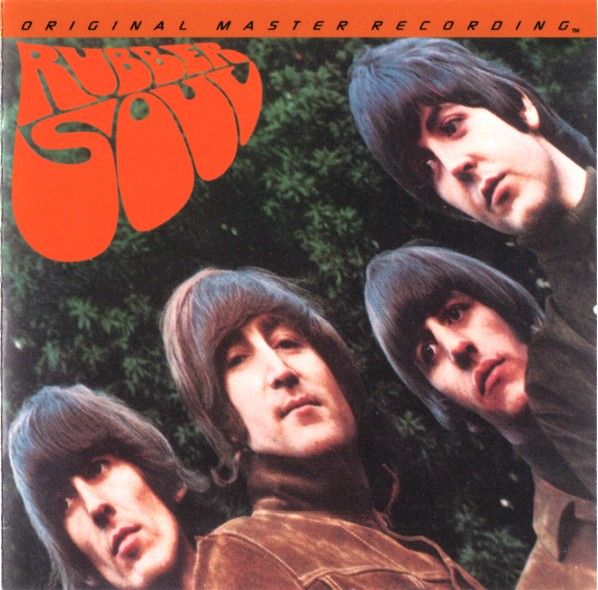 The first time the original British "Rubber Soul” album was made available in the US was the "Original Master Recording" vinyl edition released through Mobile Fidelity Sound Lab in June of 1984. This album included "I'm Looking Through You" and was prepared utilizing half-speed mastering technology from the original master tape on loan from EMI. This version of the album was only available for a short time and is quite collectible today. The first time the original British "Rubber Soul” album was made available in the US was the "Original Master Recording" vinyl edition released through Mobile Fidelity Sound Lab in June of 1984. This album included "I'm Looking Through You" and was prepared utilizing half-speed mastering technology from the original master tape on loan from EMI. This version of the album was only available for a short time and is quite collectible today.
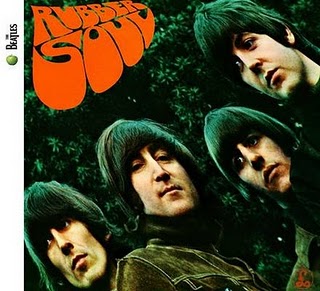 The new George Martin stereo mix from 1986 was used on the April 30th, 1987 released “Rubber Soul” compact disc, the vinyl edition coming out on July 21st, 1987. This mix was also used when the CD was remastered and re-released on September 9th, 2009, the remastered vinyl edition coming out on November 13th, 2012. The new George Martin stereo mix from 1986 was used on the April 30th, 1987 released “Rubber Soul” compact disc, the vinyl edition coming out on July 21st, 1987. This mix was also used when the CD was remastered and re-released on September 9th, 2009, the remastered vinyl edition coming out on November 13th, 2012.
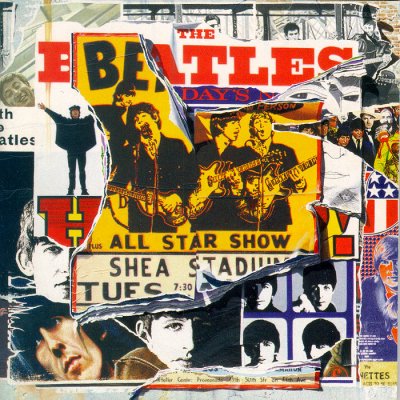 While there were plans to include the incredible “take one” studio recording on a proposed '80s album to be entitled “Sessions,” this release never panned out. However, the October 24th, 1965 recording did surface on the long awaited “Anthology 2” album. Instead of creating a stereo mix of the song, they used the original mono mix that presumably was created on October 25th, 1965. The interesting original arrangement put together by The Beatles was shown to be way before its time, although we’re so used to hearing the song as we’ve come to know it that one wonders if it would have fit as snugly on the “Rubber Soul” album had they not modified it. While there were plans to include the incredible “take one” studio recording on a proposed '80s album to be entitled “Sessions,” this release never panned out. However, the October 24th, 1965 recording did surface on the long awaited “Anthology 2” album. Instead of creating a stereo mix of the song, they used the original mono mix that presumably was created on October 25th, 1965. The interesting original arrangement put together by The Beatles was shown to be way before its time, although we’re so used to hearing the song as we’ve come to know it that one wonders if it would have fit as snugly on the “Rubber Soul” album had they not modified it.
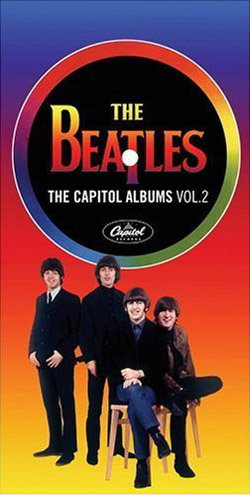 On April 11th, 2006, the box set “The Capitol Albums, Vol. 2” was released, which contained the entire American “Rubber Soul” album as originally made available. It was claimed that the 1965 mixes were restored, but because of a mix-up when putting the set together, a critical mistake was made. The mono mixes for the entire “Rubber Soul” album were actually “fold down” mixes created by combining both channels of the stereo mixes. Therefore, while the stereo version of “I’m Looking Through You” contained the false starts, so did the mono version, which wasn’t on the original mono copies of the album. The problem was rectified shortly thereafter, but the first pressings of the set contained the error. If you’re interested in owning authentic CD replicas of the official US mixes of “Rubber Soul,” buying a new copy of this box set is your best bet. On April 11th, 2006, the box set “The Capitol Albums, Vol. 2” was released, which contained the entire American “Rubber Soul” album as originally made available. It was claimed that the 1965 mixes were restored, but because of a mix-up when putting the set together, a critical mistake was made. The mono mixes for the entire “Rubber Soul” album were actually “fold down” mixes created by combining both channels of the stereo mixes. Therefore, while the stereo version of “I’m Looking Through You” contained the false starts, so did the mono version, which wasn’t on the original mono copies of the album. The problem was rectified shortly thereafter, but the first pressings of the set contained the error. If you’re interested in owning authentic CD replicas of the official US mixes of “Rubber Soul,” buying a new copy of this box set is your best bet.
 Owning the original 1965 mono and stereo mixes made available in Britain is much easier. Just purchase the box set “The Beatles In Mono,” which contains their whole mono catalog as well as the entire “Help!” and “Rubber Soul” LPs with their original stereo mixes, all remastered. This was released on CD on September 9th, 2009 and on vinyl on September 9th, 2014. Owning the original 1965 mono and stereo mixes made available in Britain is much easier. Just purchase the box set “The Beatles In Mono,” which contains their whole mono catalog as well as the entire “Help!” and “Rubber Soul” LPs with their original stereo mixes, all remastered. This was released on CD on September 9th, 2009 and on vinyl on September 9th, 2014.
Live Performances
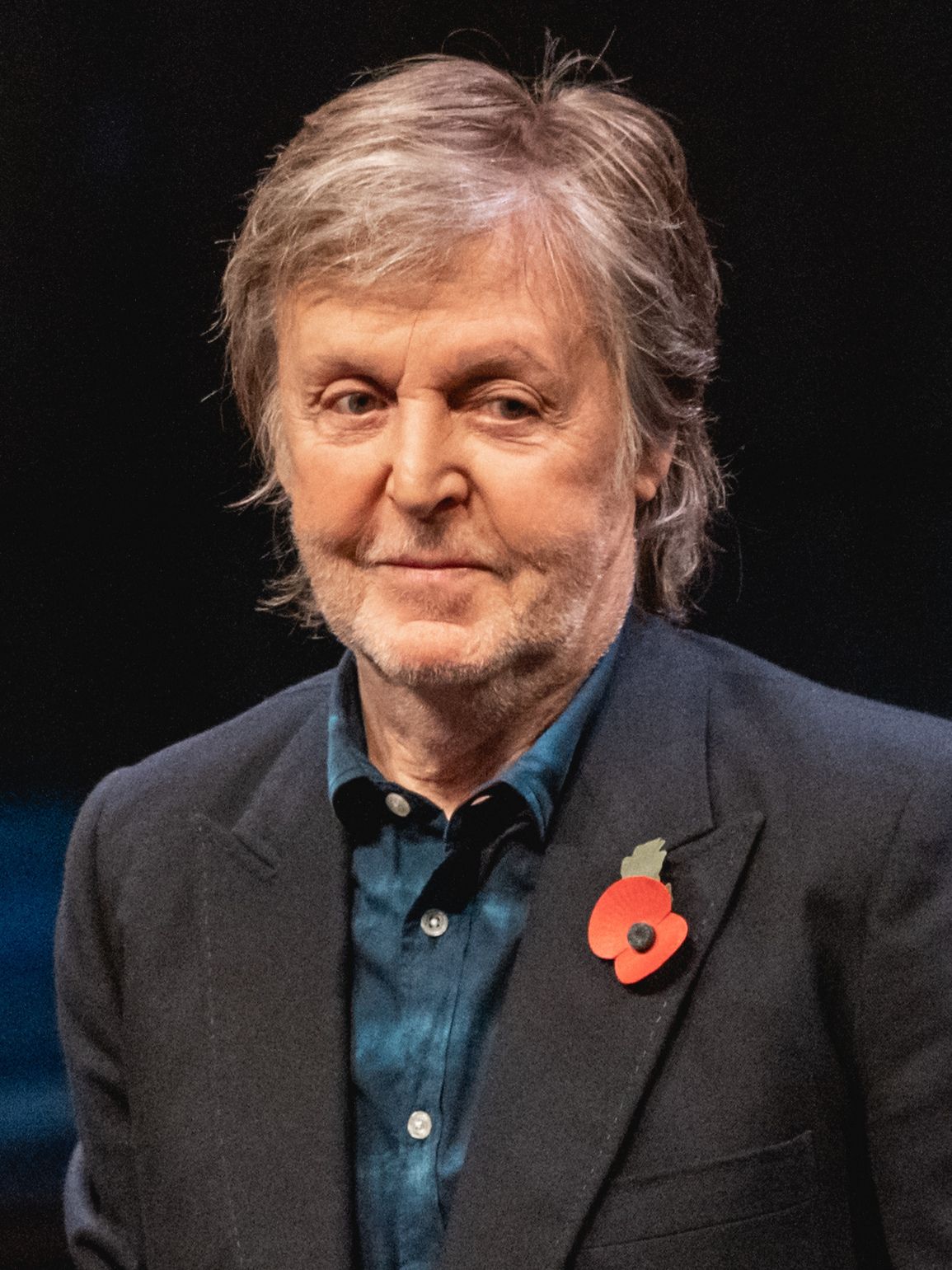 The Beatles viewed “I’m Looking Through You” as only an album track so they overlooked it for any late 1965 or 1966 live performances. Paul McCartney also appeared to have overlooked it throughout his solo concert tours. That is, until his “Up And Coming Tour” of 2010 and 2011 in which he periodically featured the song using a primarily acoustic arrangement. He then again included the song at times in his "On The Run Tour" of 2011 and 2012. His "Out There" tour, which ran from 2013 through 2015, periodically included the song as well. The Beatles viewed “I’m Looking Through You” as only an album track so they overlooked it for any late 1965 or 1966 live performances. Paul McCartney also appeared to have overlooked it throughout his solo concert tours. That is, until his “Up And Coming Tour” of 2010 and 2011 in which he periodically featured the song using a primarily acoustic arrangement. He then again included the song at times in his "On The Run Tour" of 2011 and 2012. His "Out There" tour, which ran from 2013 through 2015, periodically included the song as well.
Conclusion
 Paul McCartney wasn’t known as a songwriter who divulged much of his personal life in his lyrics. His customized pop songs about teenage romance, such as “All My Loving” for instance, may have been inspired by his budding feelings toward Jane Asher, but no one would know it. Desmond and Molly, as well as Maxwell Edison and Joan, were obviously fictitious creations for storytelling. And gobbledy-gook lines about “silver spoons” and “the banks of her own lagoon” were obviously too ‘stream of consciousness’ to be personal. As Barry Miles explains in “Many Years From Now,” Paul “normally preferred to universalize his songs.” Paul McCartney wasn’t known as a songwriter who divulged much of his personal life in his lyrics. His customized pop songs about teenage romance, such as “All My Loving” for instance, may have been inspired by his budding feelings toward Jane Asher, but no one would know it. Desmond and Molly, as well as Maxwell Edison and Joan, were obviously fictitious creations for storytelling. And gobbledy-gook lines about “silver spoons” and “the banks of her own lagoon” were obviously too ‘stream of consciousness’ to be personal. As Barry Miles explains in “Many Years From Now,” Paul “normally preferred to universalize his songs.”
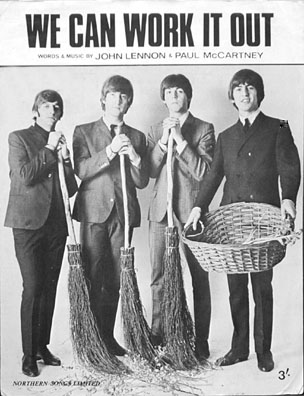 However, Paul went through a brief phase in 1965 where he wrote about his personal experiences with a degree of specificity. Coincidentally, the three songs in question, “We Can Work It Out,” “You Won’t See Me” and “I’m Looking Through You,” all pertained to the emotional rollercoaster he was going through with his then girlfriend Jane Asher. He must have been thrown by this change in circumstances to the degree that he, not once, but three times addressed the issue in song, something he usually wouldn’t do. Luckily, this unhappy time in Paul’s life resulted in three gems of The Beatles' mid-career catalog that he can even return to in concert at times without any pain…that we know of. However, Paul went through a brief phase in 1965 where he wrote about his personal experiences with a degree of specificity. Coincidentally, the three songs in question, “We Can Work It Out,” “You Won’t See Me” and “I’m Looking Through You,” all pertained to the emotional rollercoaster he was going through with his then girlfriend Jane Asher. He must have been thrown by this change in circumstances to the degree that he, not once, but three times addressed the issue in song, something he usually wouldn’t do. Luckily, this unhappy time in Paul’s life resulted in three gems of The Beatles' mid-career catalog that he can even return to in concert at times without any pain…that we know of.
Song Summary
“I’m Looking Through You”
Written by: John Lennon / Paul McCartney
-
Song Written: October, 1965
-
Song Recorded: November 10 & 11, 1965
-
First US Release Date: December 6, 1965
-
-
US Single Release: n/a
-
Highest Chart Position: n/a
-
British Album Release: Parlophone #PCS 3075 “Rubber Soul”
-
Length: 2:20 (2:25 -US stereo mix)
-
Key: A- flat major
-
Producer: George Martin
-
Engineers: Norman Smith, Ken Scott
Instrumentation (most likely):
-
Paul McCartney - Lead Vocals, Bass Guitar (1964 Rickenbacker 4001S), Lead Guitar (1962 Epiphone Casino ES-230TD)
-
John Lennon - Rhythm Guitar (1964 Gibson J-160E), Backing Vocals
-
George Harrison – Lead Guitar (1961 Sonic Blue Fender Stratocaster), tambourine
-
Ringo Starr – Drums (1964 Ludwig Super Classic Black Oyster Pearl), Organ (Hammond RT-3), pack of matches tapping (brand unknown)
Written and compiled by Dave Rybaczewski
|
IF YOU WOULD LIKE TO MAKE A DONATION TO KEEP THIS WEBSITE UP AND RUNNING, PLEASE CLICK BELOW!
Sign Up Below for our MONTHLY BEATLES TRIVIA QUIZ!
Sign Up Below for our MONTHLY BEATLES TRIVIA QUIZ!
|